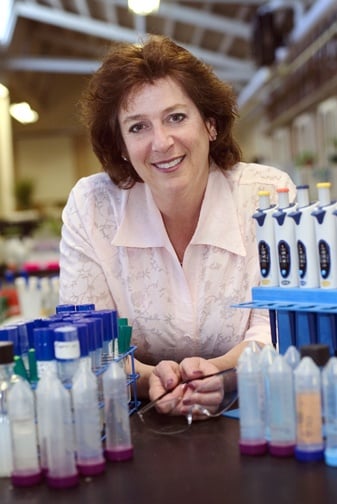By Ellyn Daugherty, Biotechnology: Science for the New Millennium, 2E
Many high school and college biotechnology students realize that having research experience in an academic or industry lab has many benefits. Many search for paid or unpaid internships, part-time employment or propose a research project in their instructor's lab, working independently, applying what they already know and building expertise in experimental design, instrumentation, and data analysis.
Working with other researchers in an adult science environment to collect meaningful, valid data is different than the typical lab activity in most lab classes. Since making research progress is important, student researchers need an arsenal of skills to work professionally and productively in a lab.
To be productive in a bioscience environment, student researchers must demonstrate a variety of "soft skills" including a pleasant, positive attitude. They should show an appropriate enthusiasm, be able to accept constructive criticism, and act in an alert and safe manner. Obviously, independent research requires self-directedness and the ability to recognize tasks that need to be done. Student researchers also must be able to collaborate with other team members. Research students should be able to reflect on their experimental results and see the values and applications of their work.
There are several basic standard laboratory techniques and methods that a beginning student researcher must master. In a bioscience environment these "hard skills" might include record keeping, measurement, microscopy, cell culture, electrophoresis, spectrophotometry, and dissection, to name a few. Of all the hard skills needed in a bioscience research lab, the most important may be the ability to prepare solutions. Solution preparation is the "gatekeeper" of bioscience research and without it being mastered student researchers get stalled and cannot work independently in a lab.
Virtually all macromolecules (DNA, RNA and/or protein) used in a research lab must be in a buffered solution. Student researchers must be able to prepare any solution at any volume, concentration or pH.
Although it is taught in introductory chemistry courses, most students and many teachers never master solution prep because they don't have a chance to practice and apply it. The math (dimensional analysis) used in solution preparation often causes anxiety in bioscience majors. Biology teachers lose any skill they had in preparing solutions when the activities in their classrooms have them "mix bottle A into bottle B." Rarely, do they know the concentration or pH of the solutions they are using. They unlearn any solution prep they used to know. Biology teachers are often "mole-phobic" and usually have solution anxiety.
It is worth the time it takes for biotechnology instructors to learn and have their students learn solution preparation. It can be fun and easy when taught and practiced in small, progressive steps using hands-on activities and having students self-evaluate their skill development. The math and science skills used in making solutions are those that apply the concepts (metrics, measurement, mass, volume, concentration, pH and buffers) that are taught in integrated biology and chemistry courses.
The Biotechnology Science for the New Millennium,2E textbook and the laboratory manual cover solution preparation instruction, practice and self-evaluation in Chapter 3. A PowerPoint® presentation covering how to teach solution preparation can be found at http://ellyndaugherty.com/BiotechEd/workshops.htm and Carnegie Learning's Biotechnology Science for the New Millennium Biotech Digital Resources (password-accessed by curriculum adopters) have lab tutorials covering solution preparation.
Here is a scope and sequence of skill development activities to master solution preparation.
• Metric Measurement and Conversion Cover the use and units of measurements of rulers (cm), graduated cylinders (mL), and a scale/balance (g). Next, conversion (factors) between units moving the decimal point to change between metric unit equivalents.
• Measurement of Small Volumes Use of pipets and micropipets to measure diluted food coloring solutions of different volumes into test tubes, microtubes and/or culture plates.
• Mass Measurement Use of electronic tabletop and analytical balances to weigh out glucose of different masses. Glucose can be dissolved in a specific volume of water and then tested with glucose test strips to check concentration and thus mass measurement.
• Introduction to Concentration Measurement Using salt in water (or sugar in water) introduce the terms "solute", "solvent", "solution" and "concentration" (mass of solute / total volume of solvent). Demonstrate how concentration of the same solution can be reported in different ways i.e.. g/mL, %, and molarity.
• Solutions Preparation Calculations and Preparations Students prepare copper sulfate solutions (blue) of different concentration using the three concentration equations to determine the mass of solute to use in the solution. Dilutions of prepared solutions follow. Prepared solutions can be evaluated by measuring the blue color light absorbance at 595 nm on a spectrophotometer.
• pH Measurement and Adjustment Students learn to measure pH of different solutions with pH paper and a pH meter and then prepare buffers (a specified volume, concentration, and pH) to use later as the solvent in different protein or DNA solutions.
Solution preparation instruction, taught and practiced in this way, gives all students a good foundation for making solutions in current courses, future courses and when working with biomolecules in a research lab. Start teaching measurement and solution prep early and reinforce it regularly as students progress through their biotech courses. Solution preparation skills are lost if not practiced regularly and instructors should give students regular opportunities to demonstrate these skills in each bioscience course. Solution preparation makes math abstraction more concrete and provides students with an absolute requisite skill needed for independent work in any bioscience research facility.
Check out our Biotechnology Educator Support website at www BiotechEd.com for all kinds of teacher support including presentations, lesson plans, and tips on how to plan or implement a biotechnology education program. Ellyn Daugherty, Carnegie Learning and G-Biosciences give you the tools you need to prepare your students for academic and industry options in the science or business of biotechnology.






